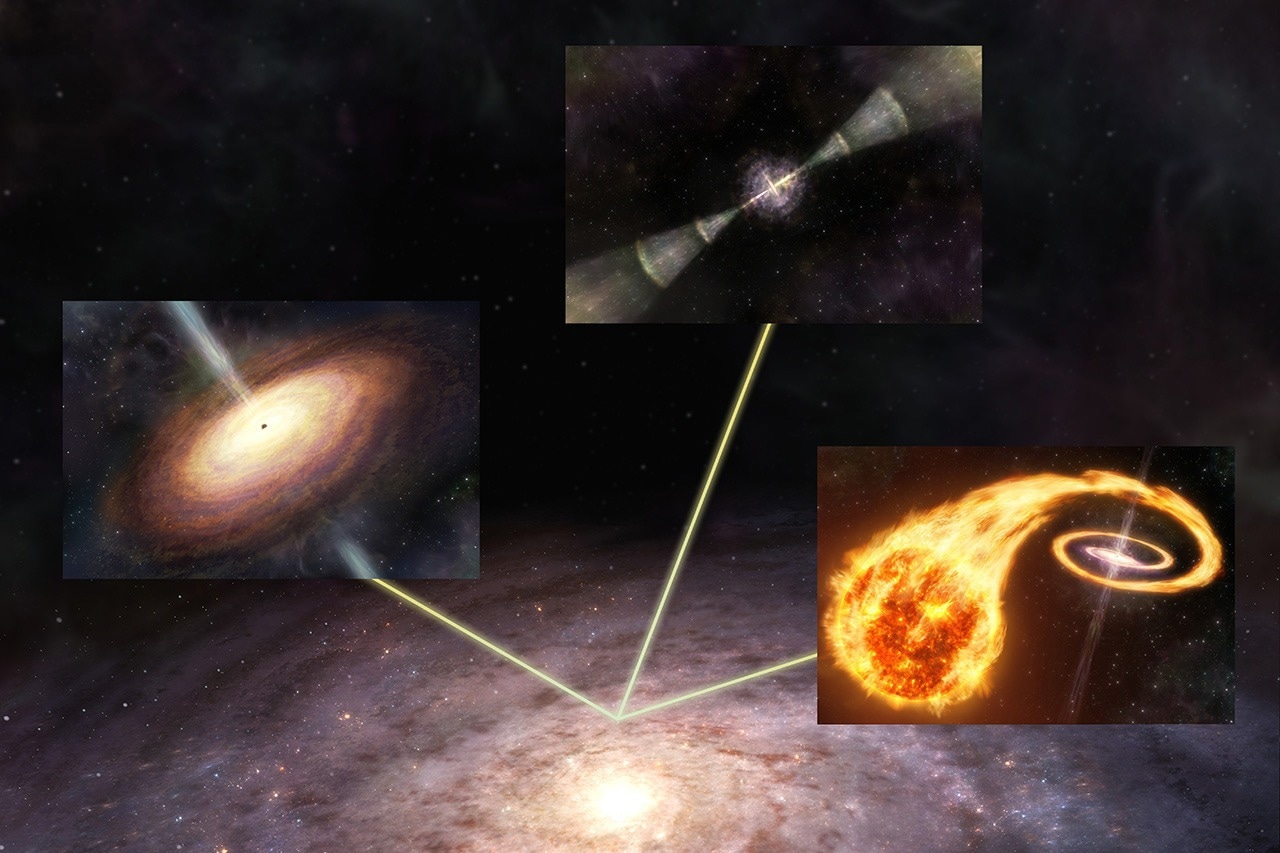A new study has enhanced the precision of the parameters that rule the expansion of the Universe.
 A conceptual diagram of this research. Signals from supernovae (bottom right inset), quasars (middle left inset), and gamma-ray bursts (top center inset) reach Earth in the Milky Way Galaxy (background), where we can use them to measure cosmological parameters. Image Credit: National Astronomical Observatory of Japan.
A conceptual diagram of this research. Signals from supernovae (bottom right inset), quasars (middle left inset), and gamma-ray bursts (top center inset) reach Earth in the Milky Way Galaxy (background), where we can use them to measure cosmological parameters. Image Credit: National Astronomical Observatory of Japan.
Highly precise parameters assist astronomers in identifying how the Universe has grown to its present state and how it will develop in the future.
It is a well-established fact that the Universe is growing. However, with no landmarks in space, it is difficult to precisely quantify how fast it is expanding. Hence, astronomers search for trustworthy landmarks.
Distant objects in the Universe appear to be fainter, even if their brightness has not changed. If the intrinsic (initial) brightness of an object can be determined, it is possible to evaluate its distance depending on its observed brightness. Objects of well-known brightness in the Universe that enable one to calculate the distance are known as “standard candles.”
The group leading this new research is headed by Maria Giovanna Dainotti, Assistant Professor at the National Astronomical Observatory of Japan (NAOJ), and Giada Bargiacchi, Ph.D. student at the Scuola Superiore Meridionale in Naples. Their work was assisted by the supercomputing facilities at NAOJ run by Kazunari Iwasaki, Assistant Professor at NAOJ and member of the Center for Computational Astrophysics.
By leveraging a range of new statistical techniques to examine data for several standard candles like Supernovae, Gamma Ray Bursts (sudden flashes of powerful radiation) and Quasars (powerful black holes using matter in the distant Universe), the group has opened up a new avenue in analyzing these "standard candles".
Various standard candles are beneficial in different distant ranges, so integrating several standard candles enabled the team to map bigger areas of the Universe.
The new outcomes decrease the doubt of main parameters by up to 35%. Highly precise parameters will aid in identifying if the Universe will stay expanding forever or ultimately fall back in on itself.
Journal Reference:
Dainotti, M. G., et al. (2023) Reducing the Uncertainty on the Hubble Constant up to 35% with an Improved Statistical Analysis: Different Best-fit Likelihoods for Type Ia Supernovae, Baryon Acoustic Oscillations, Quasars, and Gamma-Ray Bursts. The Astrophysical Journal. doi.org/10.3847/1538-4357/acd63f.